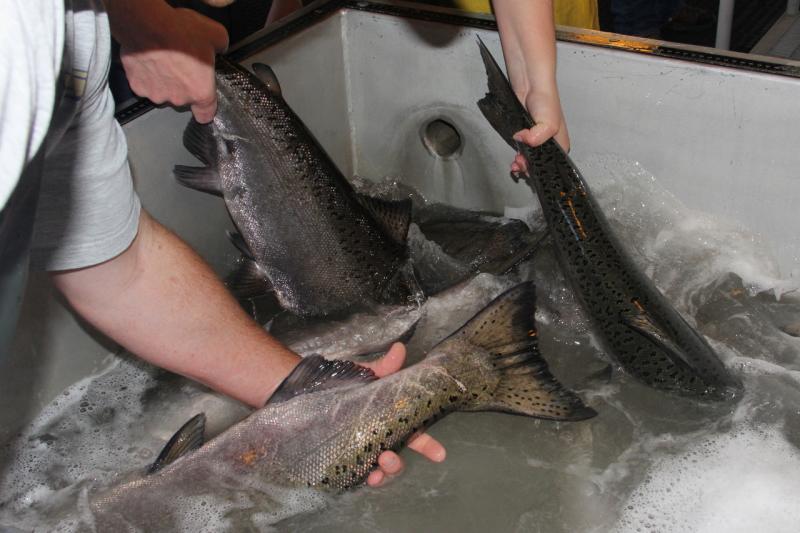Previously we explained how fisheries managers account for the Chinook salmon prey needs of Southern Resident killer whales. Today we will explain how to take part in the public process of setting federal salmon fishing seasons in waters off the U.S. West Coast.
NOAA Fisheries West Coast Region works with the Pacific Fishery Management Council (Council) to set salmon fishing seasons. We also set harvest levels at sustainable levels consistent with the Magnuson-Stevens Act. Annual catch limits are set to achieve science-based conservation objectives that constrain fishing when abundance is low and to support recovery of the runs protected by the Endangered Species Act that co-mingle in the ocean with the abundant runs.
The Council begins the public process of setting salmon fishing seasons along the West Coast in March. Harvest levels depend on fish returns, which vary widely from year to year. The first step is to consider the scientific forecast for salmon returns to rivers along the West Coast.
Annually the Council’s abundance analysis estimates returns for each river, down to the specific stretch of river or tributary. The outlook for 2020 varies widely, with returns likely to be stronger in California but weak in the Pacific Northwest.
NOAA Fisheries Guidance
Each year NOAA Fisheries’ West Coast Region sends the Council a guidance letter (see our 2020 guidance letter). It summarizes key parameters for designing the upcoming salmon season consistent with the Endangered Species Act and Magnuson-Stevens Act and other recommendations and concerns about individual salmon stocks. We have included guidance about taking into account the Chinook salmon prey needs of Southern Resident killer whales as well. And this year, for example, forecasts predict very low returns of Klamath River fall-run Chinook salmon. Therefore, we urged a cautious approach in setting fishing rules for the stock. That is likely to limit fishing between Point Falcon on the northern Oregon Coast and Point Sur, California, to reduce impacts on the Klamath fish even if other stocks might be more plentiful.
Regarding the prey needs for the endangered Southern Residents, Regional Administrator Barry Thom noted in the letter:
“We are particularly concerned about years with critically low Chinook salmon abundance throughout the whales’ geographic range because of the potential effects to the whales’ energetics, health, reproduction, and survival.”
He advised that if Chinook salmon numbers fall below the average of the seven lowest abundance years, then the Council should adopt additional precautionary measures. These could include reduced quotas or limits on salmon fishing time and areas. The guidance letter is specific to managing the 2020 fisheries. However, the workgroup and Council are continuing their efforts to incorporate the whales into a long-term fishery management strategy.
Salmon returns this year are not expected to fall to those levels.
Three Fishing Alternatives
The Council uses the forecasts with input from federal, state, and tribal representatives; industry; and the public to develop potential management scenarios for the salmon season. These alternatives vary—some with more fishing and others with less, and with variations in time and areas where fishing would be allowed. Each must allow enough salmon to return to their home rivers to spawn the next generation.
The Council then held public meetings between their March and April meetings to solicit input. Next, the Council will discuss the alternatives Based on the scientific information and public comment, the Council will select one of the alternatives at their April meeting that runs April 4-10, 2020. They will recommend the alternative to NOAA Fisheries for approval and implementation into regulation. The new fishing year will start in early May.
To offer input now, you can join the Council’s April meeting, which will be held via webinar given health and safety concerns about Covid-19.





